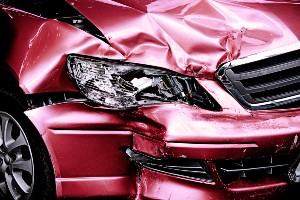Car accidents often result in catastrophic injury. Unfortunately, many of those accidents occur due to driver error. Drivers usually take the ability to safely navigate on the road for granted. They may grow distracted behind the wheel or engage in dangerous or reckless behavior that can significantly increase the risk of an accident.
Each year, more than 200,000 people die due to accidental injuries. Of those, 40,000 deaths occur because of motor vehicle accidents, according to the CDC. Those accidents may happen for several reasons, often based on the decisions of the driver behind the wheel. If you are involved in an accident, it’s almost always in your best interest to contact a car accident attorney to discuss your options and protect your rights.
1. Speeding
 According to the NHTSA, speeding contributes to an estimated 29 percent of traffic fatalities. Speeding may also significantly impact the likelihood that a driver will cause an accident and may raise the severity of injuries sustained in an accident.
According to the NHTSA, speeding contributes to an estimated 29 percent of traffic fatalities. Speeding may also significantly impact the likelihood that a driver will cause an accident and may raise the severity of injuries sustained in an accident.
Speeding creates several key dangers on the road. First, it makes it more difficult for drivers to control the vehicle safely. At high rates of speed, drivers may need to respond faster to guide the vehicle around an obstacle. Speeding vehicles also need more space to slow or stop, which means that the driver may not have adequate time to respond to a potential hazard.
Speeding also increases a vehicle’s force in an accident. At a low rate of speed, in many cases, the vehicles involved in an accident will suffer less damage, and the passengers in the vehicles will have a lower overall chance of suffering severe injuries. At a high rate of speed, on the other hand, the vehicles and their passengers may ultimately take much more substantial damage.
Despite the known dangers of speeding, many drivers continue to push the speed limit and engage in reckless behaviors behind the wheel.
2. Distraction
 Driver distraction can pose a potential danger. When behind the wheel, drivers must keep their eyes, hands, and attention on the road, where they can react quickly to any changes around them. Unfortunately, more than 3,000 people die each year from distracted driving accidents, and even more may suffer severe injuries. 39 percent of high school students alone admit to sending texts or messages while driving.
Driver distraction can pose a potential danger. When behind the wheel, drivers must keep their eyes, hands, and attention on the road, where they can react quickly to any changes around them. Unfortunately, more than 3,000 people die each year from distracted driving accidents, and even more may suffer severe injuries. 39 percent of high school students alone admit to sending texts or messages while driving.
Even people who routinely remember not to use their phones while behind the wheel may suffer from other distractions that can cause severe problems behind the wheel.
Drivers may, for example:
- Eat or drink behind the wheel, often to save time
- Put on makeup while driving
- Deal with children and pets in the vehicle
- Get invested in a conversation with a passenger, which can increase overall rates of distraction
- Reach for something they dropped or that a child dropped
Any type of driving distraction can prove deadly out on the road, whether drivers grow manually distracted, with their hands off the wheel, cognitively distracted, with their attention off the road, or visually distracted, which involves taking their eyes away from the road.
3. Tailgating
Often, drivers do not allow adequate following speed between their vehicle and the one in front of them. Some drivers may enjoy the challenge of reacting quickly. Others may feel they need to maintain that short space in tight traffic since they may want to avoid someone else getting in front of them.
Tailgating slows the time drivers have to react if the front driver slows, turns, or slams on the brakes. As a result, the tailgating driver may end up causing a devastating rear-end collision.
4. Dangerous Lane Changes
Changing lanes and merging into traffic pose a unique danger. In many cases, drivers may fail to look closely enough before they try to change lanes, leading to a devastating accident. Many vehicles, especially big trucks, have large blind spots that can make changing lanes much more difficult, increasing the risk of an accident.
5. Intoxication
Every day, around 32 people across the United States die from drunk driving accidents. Even a low level of intoxication may substantially increase the risk of an accident. Drunk drivers struggle with various symptoms that can make it more difficult for them to navigate safely on the road.
They may have trouble with:
- Tunnel vision
- Inability to control the vehicle safely
- Decision-making skills
- Reflexes and response times
Unfortunately, those challenges create immense potential for accidents, which may result in severe injuries. While some drivers may try to drive very carefully after consuming alcohol, they often do not drive predictably and may take unexpected chances. Furthermore, driving while intoxicated can interfere with drivers’ ability to respond to potential hazards around them, which means they may inadvertently cause a devastating collision.
6. Mechanical Failures
While most car accidents occur directly from driver error, in some cases, the cause of the accident might fall outside the driver’s control. Mechanical failures can cause devastating accident potential out on the road.
Often, a mechanical failure can send a vehicle careening out of a driver’s control.
- Tire blowouts
- Engine problems
- Brake issues
Even minor problems, like problems with the vehicle’s windshield wipers or lights, can significantly increase the risk of an accident.
Determining who bears liability for an accident caused by a mechanical failure can prove very complicated. In some cases, for example, the vehicle manufacturer may bear liability for the accident since the vehicle manufacturer may have failed to produce a vehicle that offered a reasonable level of safety for its inhabitants. In other cases, however, the error might lie with the vehicle’s owner.
For example, a vehicle owner who overloads a vehicle or fails to replace tires promptly, causing a tire blowout, would bear liability for that incident. Finally, in some cases, a mechanic who recently worked on the vehicle may be liable for an accident. Mechanics may bear liability when they fail to repair the vehicle correctly but certify it as road-worthy anyway.
7. Aggressive Driving
Aggressive driving can cause a distinct uptick in the risk of an accident out on the road. Aggressive drivers often grow angry because of the challenges they may have faced, from the actions of another driver to the conditions on the road itself. For example, drivers may get very frustrated during rush hour, causing them to speed or drive dangerously to make up time.
Aggressive driving can take several different forms. Some aggressive drivers may push to excessive speeds. Others may swerve in and out of traffic or tailgate.
In extreme cases, aggressive driving may progress to dangerous acts of road rage. During a road rage event, the raging driver might push another driver or vehicle off the road or ram it deliberately to cause an accident due to that anger. Raging drivers may also engage in other unsafe behaviors, including following the other driver to engage in a physical dispute.
8. Failure to Yield
Failing to yield to traffic can cause several devastating accidents. A driver may fail to yield in many cases when merging into traffic, especially on a major highway or interstate. Drivers may try to force themselves forward instead of stopping or slowing and allowing traffic to flow around them.
In other cases, drivers may fail to yield when stopping at an intersection: they might try to hurry through without allowing other traffic to flow around them safely. Failure to yield can lead to devastating accidents with severe consequences, especially if the driver fails to pay adequate attention to the flow of traffic around him.
9. Ignoring Traffic Signs and Signals
 Traffic signs and signals provide essential information that can make it easier to determine who has the right of way and which way traffic needs to flow. Traffic lights, for example, clearly designate which lane of traffic can continue to move through an intersection and which one needs to stop. In contrast, stop signs may indicate that all traffic needs to come to a stop before proceeding through the intersection in as safe a manner as possible.
Traffic signs and signals provide essential information that can make it easier to determine who has the right of way and which way traffic needs to flow. Traffic lights, for example, clearly designate which lane of traffic can continue to move through an intersection and which one needs to stop. In contrast, stop signs may indicate that all traffic needs to come to a stop before proceeding through the intersection in as safe a manner as possible.
Unfortunately, in some cases, drivers may ignore those essential signals. They may attempt to go through an intersection despite a red light, or ignore lane instructions requiring them to stay in a specific lane instead of changing lanes.
When drivers ignore traffic signals, it causes two critical problems. First, it dramatically increases accident risk by placing a vehicle where it should not have entered.
For example, two cars cannot come through intersections in perpendicular directions at the same time. Second, it makes it impossible for other drivers to predict the behavior of that dangerous driver, which means they may have a more challenging time navigating around them safely. Drivers who ignore traffic signs and signals may make the road much more dangerous, in general, for everyone else who shares it.
10. Blind Spot Accidents
Most passenger vehicles have a blind spot in which the driver cannot see what takes place around them. Larger passenger vehicles, by their nature, generally have larger blind spots than small ones; big trucks may have substantially larger blind spots overall, which may increase the risk of an accident still further.
Small vehicles, motorcycles, pedestrians, and cyclists may have greater odds of falling into those blind spots. Avoiding blind spots may not eliminate the risk of an accident, but remaining aware of potential blind spots may make an accident less likely.
11. Weather Problems
In some cases, accidents may result from dangerous weather. Various weather conditions can make it more difficult for drivers to maneuver safely, increasing the risk that they will cause an accident. In poor weather, a driver bears responsibility for safely controlling his vehicle.
That may mean slowing down or getting off the road in dangerous conditions.
- Fog can interfere heavily with visibility. Drivers may have a hard time seeing what happens around them, which may raise the risk that they will inadvertently cause an accident because they completely missed the presence of another vehicle. Pedestrians, cyclists, and motorcyclists may face additional danger in foggy conditions since they do not take up as much space and may not have the same visual profile on the road.
- Rainy weather offers two key hazards. First, like fog, it may interfere with visibility. During periods of heavy rain, in particular, many drivers have trouble seeing what takes place around their vehicles. Second, rain can make it harder to keep the vehicle on the road, since wet, slick roads may increase the odds that the vehicle will slide.
- Wintery weather, including snow and ice, may cause further difficulties for many drivers. In wintery weather, drivers may have a more challenging time keeping the car on the road, especially if they slide on the ice. Cold winter weather may also make it more difficult for many drivers to see since snow may stick to the windshield more heavily and prove harder for the windshield wipers to brush away.
Sometimes, drivers have no choice but to take to the road despite potentially dangerous conditions. However, they may need to take careful steps to reduce the risk of an accident, including slowing down, making sure they have their lights on, and looking twice for other vehicles around them.
Contact an Attorney When Someone Else’s Negligence Causes a Car Accident
When the negligence of another party causes a car accident, you may have the right to compensation for the damages you sustained, including your medical costs, any wage losses, and the damage to your vehicle.
An experienced personal injury lawyer can determine how much compensation you deserve, then identify the liable party by evaluating the factors that contributed to your accident. Contact a lawyer as soon after your accident as possible for help with your claim.
